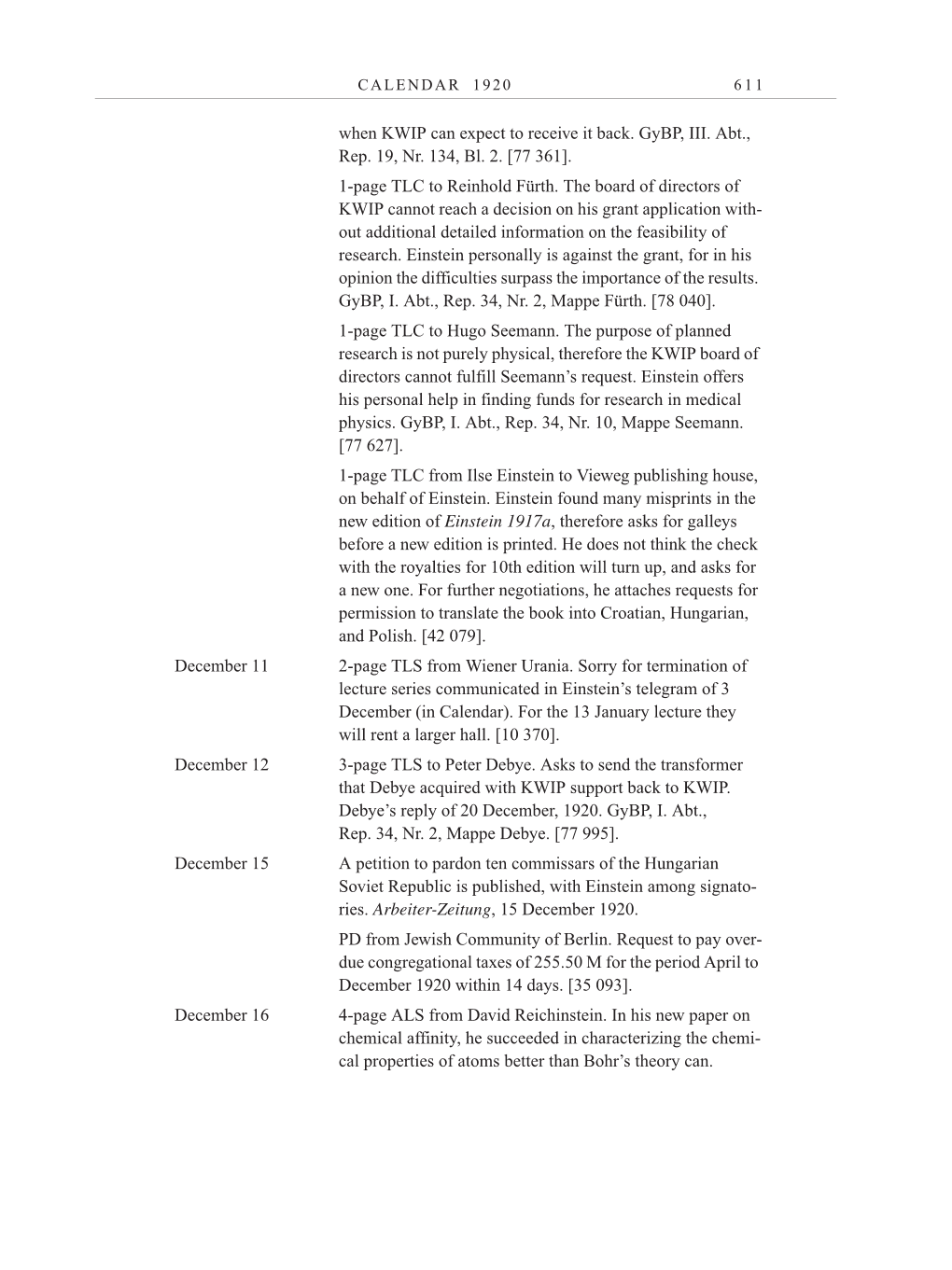CALENDAR 1920 6 1 1
when KWIP can expect to receive it back. GyBP, III. Abt.,
Rep. 19, Nr. 134, Bl. 2. [77 361].
1-page TLC to Reinhold Fürth. The board of directors of
KWIP cannot reach a decision on his grant application with-
out additional detailed information on the feasibility of
research. Einstein personally is against the grant, for in his
opinion the difficulties surpass the importance of the results.
GyBP, I. Abt., Rep. 34, Nr. 2, Mappe Fürth. [78 040].
1-page TLC to Hugo Seemann. The purpose of planned
research is not purely physical, therefore the KWIP board of
directors cannot fulfill Seemann’s request. Einstein offers
his personal help in finding funds for research in medical
physics. GyBP, I. Abt., Rep. 34, Nr. 10, Mappe Seemann.
[77 627].
1-page TLC from Ilse Einstein to Vieweg publishing house,
on behalf of Einstein. Einstein found many misprints in the
new edition of Einstein 1917a, therefore asks for galleys
before a new edition is printed. He does not think the check
with the royalties for 10th edition will turn up, and asks for
a new one. For further negotiations, he attaches requests for
permission to translate the book into Croatian, Hungarian,
and Polish. [42 079].
December 11 2-page TLS from Wiener Urania. Sorry for termination of
lecture series communicated in Einstein’s telegram of 3
December (in Calendar). For the 13 January lecture they
will rent a larger hall. [10 370].
December 12 3-page TLS to Peter Debye. Asks to send the transformer
that Debye acquired with KWIP support back to KWIP.
Debye’s reply of 20 December, 1920. GyBP, I. Abt.,
Rep. 34, Nr. 2, Mappe Debye. [77 995].
December 15 A petition to pardon ten commissars of the Hungarian
Soviet Republic is published, with Einstein among signato-
ries. Arbeiter-Zeitung, 15 December 1920.
PD from Jewish Community of Berlin. Request to pay over-
due congregational taxes of 255.50 M for the period April to
December 1920 within 14 days. [35 093].
December 16 4-page ALS from David Reichinstein. In his new paper on
chemical affinity, he succeeded in characterizing the chemi-
cal properties of atoms better than Bohr’s theory can.
